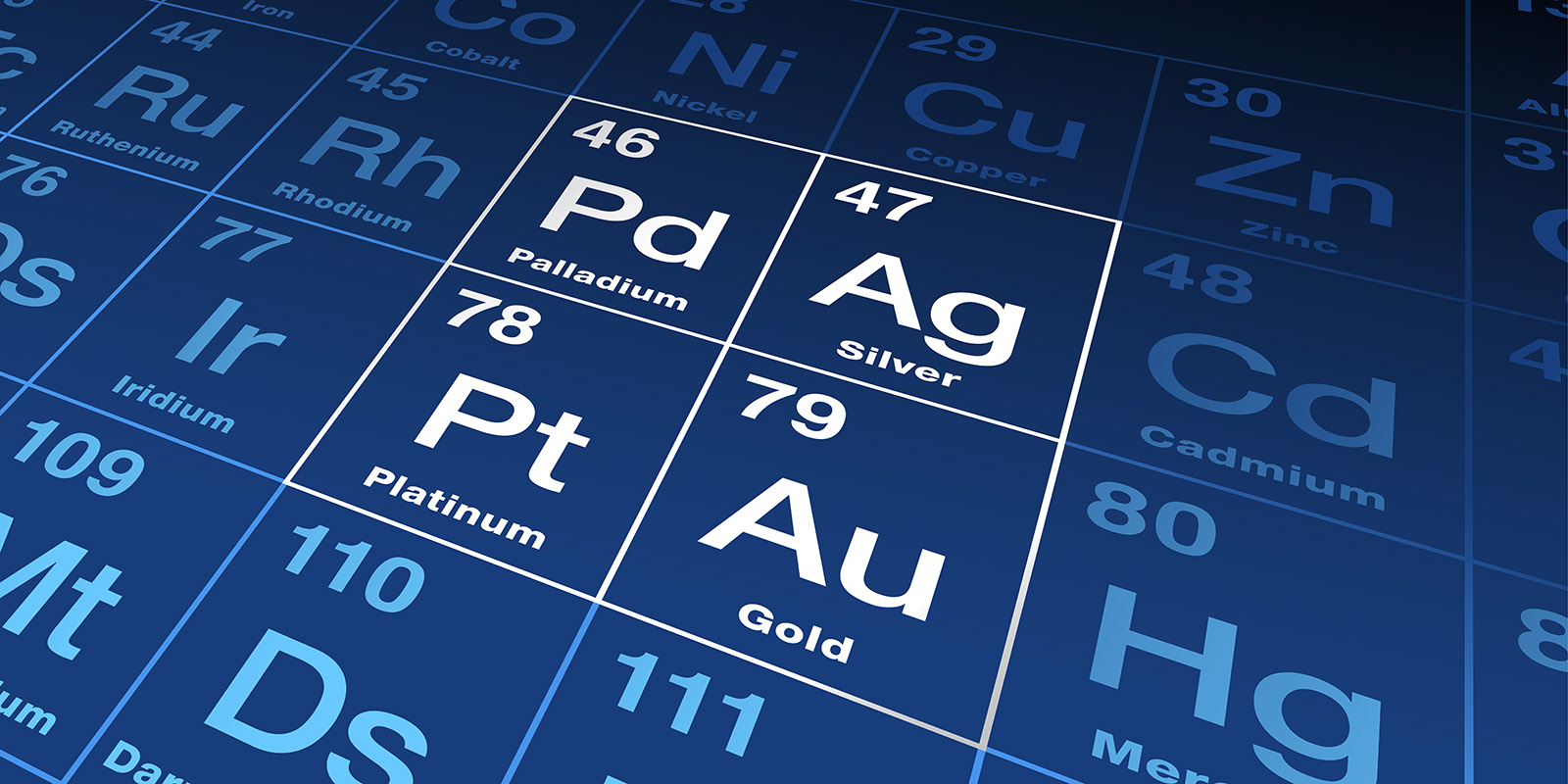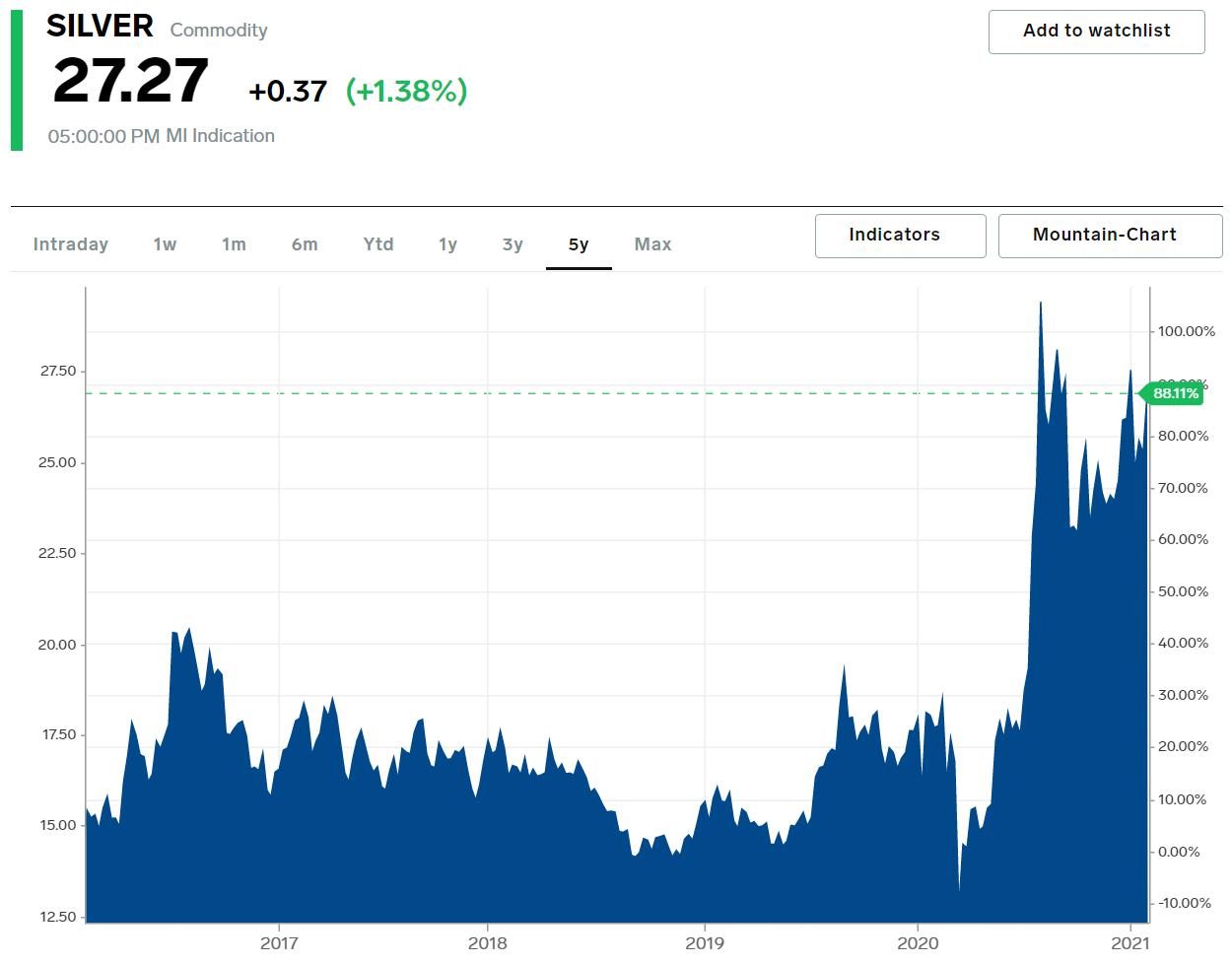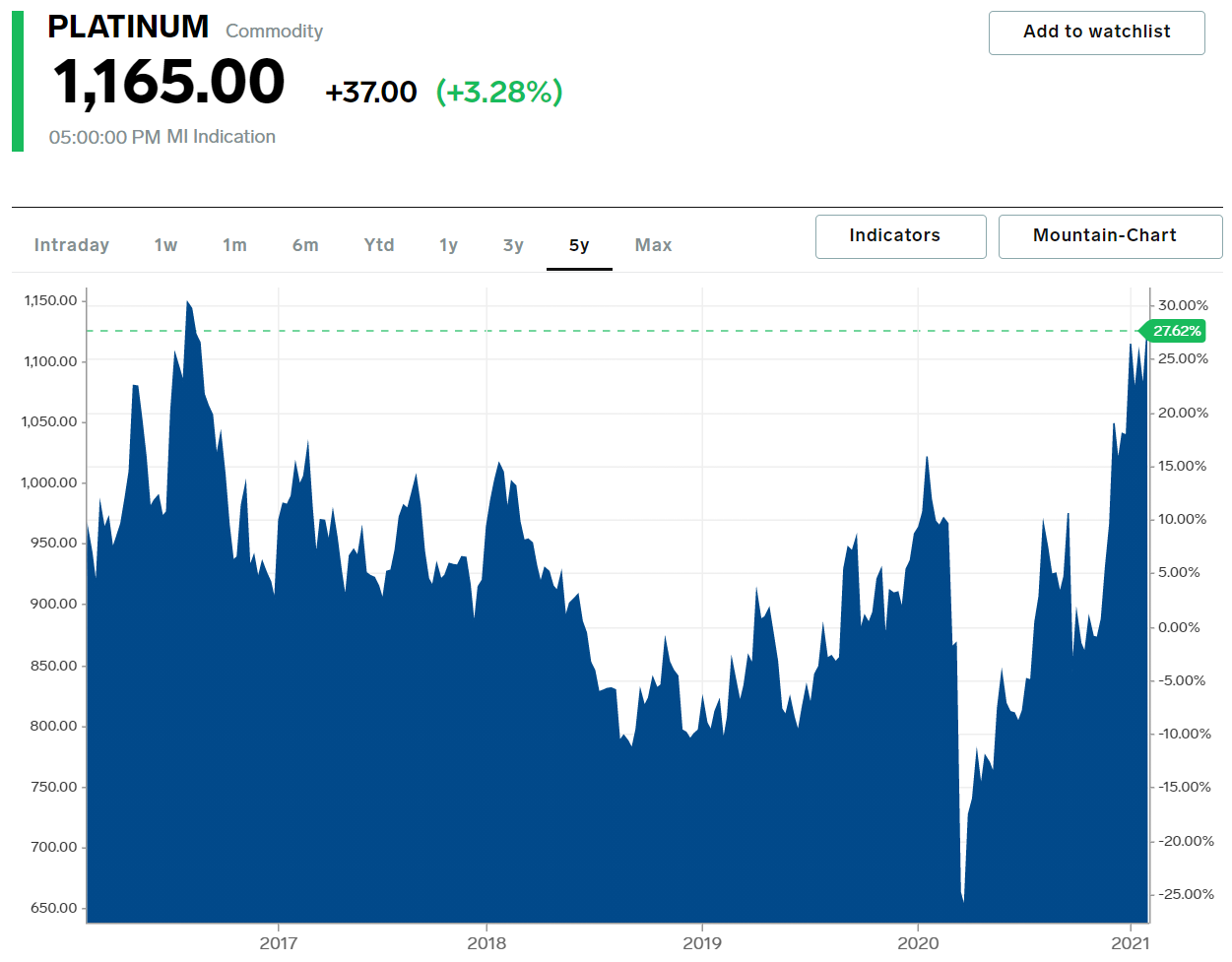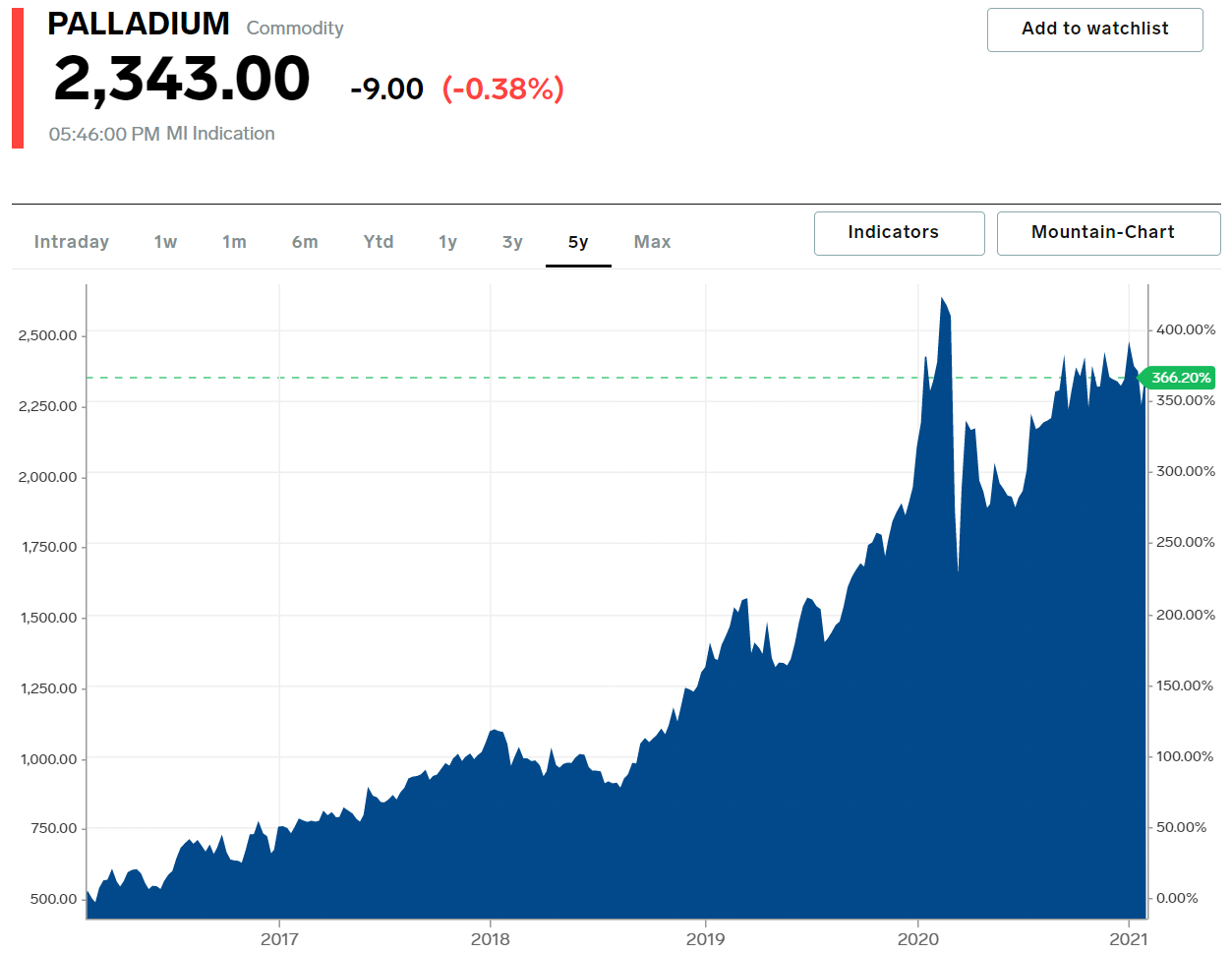Jewelry, coins, bullion, and other items made from precious metals are popular in today’s market due to their exceptional beauty and high value. Gold has always been the most popular and highly sought-after of all the precious metals, but silver, platinum, and palladium hold significant value as well. While these three metals may look similar in color and are often mistaken for one another by the untrained eye, each has its own unique characteristics that determine its value.
Here is a breakdown of the key differences and similarities between silver, platinum, and palladium.
Silver vs. Platinum vs. Palladium: At a Glance
- Silver: The most affordable and widely used of the three. Known for its bright, white color and tendency to tarnish.
- Platinum: The densest and rarest, prized for its durability and bright white luster.
- Palladium: A lightweight alternative to platinum, gaining popularity in jewelry due to its similar appearance and lower cost.
Delving Deeper: Unveiling the Key Differences
Silver vs. Platinum vs. Palladium: Color
All three metals boast a silvery appearance, but subtle variations exist. Silver shines with a cool white tone, while platinum offers a more brilliant white with a hint of greyness. Palladium falls somewhere in between, but can develop a slightly yellowish hue over time.
Silver vs. Platinum vs. Palladium: Weight
Here, density plays a starring role. Platinum holds the heavyweight title, feeling noticeably denser than silver or palladium in your hand. Silver, on the other hand, is the lightest of the trio.
Silver vs. Platinum vs. Palladium: Cost
Silver experiences greater price fluctuations compared to gold. This is because demand for silver comes from two sources: investors seeking a safe haven for their money, and industries that use silver in their products. Silver is the most budget-friendly option. Platinum comes in second, while palladium can fluctuate in price but generally sits between silver and platinum.
- Price of Silver 2024: (as of July 9, 2024) $31 per troy ounce. However, prices can fluctuate based on market conditions, demand, and silver purity. It’s recommended to consult a reputable financial website.
- Price of Platinum 2024: (as of July 9, 2024) $989.95 per troy ounce.
- Price of Palladium 2024: (as of July 9, 2024) $1,028.75 per troy ounce.
Important Note: This information is for general knowledge only and should not be considered financial advice. Always conduct your own research and consult with a financial professional before making any investment decisions.
Applications
Not only is silver abundant in nature, but it is also found just about everywhere in the industrial world, with much of its value being drawn from its usability in various applications, such as appliances, electronics, cars, and even clothing. Described as the world’s most indispensable metal due to its high conductivity and low resistivity, the demand and price of silver are largely impacted by the global economy.
-
Platinum
Similar to silver, platinum also has a number of industrial uses, with the most common being in automotive and electronics applications. This results in the demand from the auto industry often directly correlating with the global demand for platinum.
Platinum also has a stable supply, with more than 70% of the world’s platinum coming from South Africa.
-
Palladium
Palladium is one of the earth’s most durable elements and is a precious hard metal that resists corrosion – much like platinum – but is more abundant in nature. Also like platinum, it is used in the automotive industry for gas-powered engines and experiences some correlating shifts in demand, as well.
Palladium also has a growing role in electronics which means you might have it hiding in plain sight.
Talented designers like Williams Cousins, use it for their combination of aesthetic and historical value. Palladium is also used in dental products.
Unveiling the Secrets: Identifying Your Precious Metals
Hallmarks
Look for tiny stamps on your jewelry or silverware. Silver may have “Sterling” or “925,” while platinum might have “Pt” followed by a purity number (e.g., Pt950). Palladium hallmarks are less common but can include “Pd” or “Palladium.”DIY Silver Purity Test – The Acid Test: If you’re looking to verify the purity of your silver at home, the acid test is a common DIY method. Here’s how it works:
- What You Need: Silver testing acid (typically nitric acid), a testing stone, and a small file.
- How It Works: Gently file a small, inconspicuous area of the silver item to expose the underlying metal. Apply a drop of silver testing acid to the exposed area. Observe the color change:
- Pure silver (99.9%) typically turns a creamy white or gray.
- Sterling silver (92.5% silver) may show a slight tint of red.
- Lower purity or non-silver metals may show green, brown, or another color, indicating the presence of other metals.
Caution: The acid test is a quick way to check for silver purity but should be used with care, as the acid can damage the item if not handled properly. For more accurate results, especially with valuable pieces, it’s best to consult a professional jeweler or use advanced methods like X-ray fluorescence (XRF).
By understanding these additional factors, you can make more informed decisions about your precious metal items, ensuring you know their true value and how to care for them properly.
Professional Help
For definitive identification, consider consulting a jeweler or appraiser. They have access to specialized equipment like X-ray fluorescence (XRF) for precise metal analysis.
Beyond the Basics: A Look at Additional Factors
While color, weight, and cost offer a solid foundation for differentiating silver, platinum, and palladium, additional factors can influence their appearance and value. Let’s explore some:
Finishes: Don’t be fooled by a single shiny surface! Each of these precious metals can be transformed through various finishing techniques, creating distinct visual effects:
- Polished Finish: The most common and dazzling option. A highly reflective surface that maximizes the metal’s natural brilliance. Popular in jewelry for its eye-catching shine.
- Matte Finish: Offers a softer, more subdued look. The surface has a slight texture, reducing reflectivity and creating a sophisticated, contemporary aesthetic. Often used in modern jewelry design.
- Satin Finish: A middle ground between polished and matte. It has a subtle sheen with a slight texture, offering a touch of understated elegance.
- Hammered Finish: Creates a textured surface with light indentations. This technique adds a unique, handcrafted appearance to jewelry pieces.
- Brushed Finish: A directional brushing technique creates a fine, linear texture on the metal surface. This finish adds a touch of sophistication and can help hide minor scratches.
The choice of finish often depends on personal preference and the desired look of the finished piece. For instance, a polished platinum engagement ring exudes timeless elegance, while a matte finish on a silver pendant might create a more modern, edgy feel.
Oxidation and Tarnishing: Silver, platinum, and palladium react differently to environmental factors:
- Silver: Prone to tarnishing, which causes it to develop a dark patina over time. This is due to a chemical reaction with sulfur in the air.
- Platinum: Highly resistant to tarnishing, making it a popular choice for fine jewelry.
- Palladium: Also resistant to tarnishing, but it can develop a yellowish cast over time.
Oxidation and Tarnishing:
- Silver: The most susceptible to tarnishing of the three. Over time, silver reacts with sulfur in the air, forming a dark tarnish layer. While some find this patina charming, it can be easily removed with a polishing cloth.
- Platinum: Highly resistant to tarnishing due to its stable surface. It maintains its bright white appearance for extended periods, making it a popular choice for high-maintenance jewelry.
- Palladium: Exhibits minimal tarnishing compared to silver. However, it can develop a slightly yellowish hue over time. Unlike silver, this discoloration isn’t caused by tarnish but rather a natural surface oxidation. This yellowish cast may not be easily removed with a simple polishing cloth.
Remember: The presence or absence of tarnish isn’t always a definitive indicator of a metal’s identity. Consulting a professional jeweler or appraiser is recommended for a precise identification.
FAQs:
- Is Palladium Rarer Than Platinum? Yes, palladium is rarer in the earth’s crust than platinum. However, its industrial applications make platinum more commercially valuable at times.
- What is 925 Palladium? This marking is unlikely. “925” typically refers to sterling silver, which is 92.5% silver and 7.5% another metal.
- What Does Palladium Look Like? Palladium has a silvery appearance, similar to platinum but with a slightly warmer tone. It can develop a yellowish hue over time.
Understanding the Value: Silver vs Platinum vs Palladium
Silver, platinum, and palladium each offer unique characteristics and applications. By understanding their key differences, you can make informed decisions when buying, selling, or simply appreciating these precious metals.
GET MORE FOR YOUR PRECIOUS METALS WITH GOLD GUYS
While silver can be known by its visible flaws, platinum by its brightness and durability, and palladium by its brightness and lightweight, it can still be difficult to effectively discern between the two – and it can be even more difficult to sell items made from these metals for a good price.
That’s where the Gold Guys come in. We specialize in assaying and purchasing your items made from silver, platinum, palladium, and other precious metals, ensuring the entire process is easy along the way. With spot prices for these metals higher now than they have been in years, it is a great time to sell.
Contact us today to learn more about selling your precious metals for a great price with Gold Guys.




